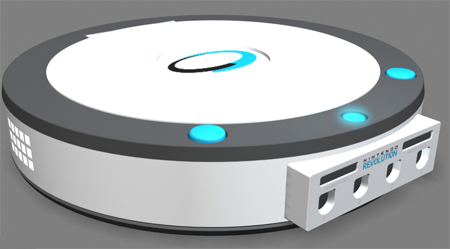En waar baseer je die "zwakste hardware" op? Omdat er nog geen hoge cijfertjes zijn opgedoken van Nintendo? Of omdat de andere cijfertjes die rondgestrooid worden door MS en Sony zo hoog zijn?
Misschien kun je nog Sony's gebazel dat de PS2 "70 miljoen polygonen per seconde" ging trekken nog herinneren, en dat het bleek te gaan om pure polygone zonder shading, belichting of iets anders. Nintendo gaf een conservatieve 6 miljoen in spelsituaties aan.
Ondertussen heeft Nintendo wel de (bewezen) krachtigste console van alle 3 neergezet. Rogue Squadron 3: Rebel Strike trekt bijvoorbeeld tussen de 14 en 20 miljoen polygonen per seconde in bepaalde situaties. De Xbox heeft hogere nummertjes voor pure MHzen, maar de UMA en een lage bussnelheid voor het geheugen zorgen toch voor enkele bottlenecks.
Ondertussen heeft de PS2 op puur processorvlak wel het snelste systeem(Daarna GC met zijn custom G3, daarna Xbox met een aangepaste Celeron), maar zorgt de rest van het systeem ervoor dat dit niet ten volste benut kan worden.
En hier gooi ik een quoteje neer van iemand anders die het redelijk netjes heeft uitgezocht. Komt oorspronkelijk uit een forum.
The Xbox has a slightly more powerful GPU, which is often quite important in making pretty pictures (far more so than the CPU, which is primarily used for gameplay). But you (again), have completely neglected to factor in the memory.
Let me put it to you this way. Memory is the place where you store pretty much everything in the game. You put your audio, textures, game code, geometry, and pretty much anything else you might want to store.
GameCube chooses the classic gaming console way of memory management. In the interests of speed, memory is all over the place. 2MB are embedded into Flipper (GameCube's GPU) (framebuffer... which is the place that every pixel on the screen is rendered), 24MB are the main system memory (most speed critical stuff is stored here), and 16MB is lower speed general purpose memory (commonly used for audio). GameCube's architecture stresses efficiency more than anything. As a result, a special form of memory with EXTREMELY low latency is used on GameCube. Memory operations to the main system memory are extremely fast, but a little bandwidth limited.
Xbox chooses the PC approach (with a twist). While on the PC, memory is kept on both the GPU (to store speed critical graphics related stuff), and the main memory (everything else). Xbox is similar... but there's no GPU memory. EVERYTHING feeds off the system memory. And the bus to that memory runs at 133MHz. Xbox has a good deal more memory than GameCube... but at a cost of a great deal of speed. Make no mistake. The unified memory architecture found in the Xbox is the achilles heel of the Xbox. Xbox might very well be as fast as all the fancy numbers Microsoft likes to spout out if the memory architecture was better.
Korte samenvatting: Cijfers betekenen vrij weinig. Het gaat uiteindelijk er veel meer om hoe er met de systeembronnen wordt omgesprongen en hoe goed er geprogrammeerd wordt. De Dreamcast had ook spellen die er beter uitzagen dan de PS2.

